Out Now
The AI Issue
Current Issue
The AI Issue
OCT - NOV 2025

HSEQ certificates are becoming increasingly popular as a way of differentiating your business – but are they really worth it? Colin Gibson of Master Electricians Australia explores.
An HSEQ (Health and Safety, Environment and Quality) certificate could prove that your business is a step above your competitors when it comes to safety. But what is HSEQ, and is it worth the time and expense to implement?
How HSEQ certification works is a common question we receive at MEA. We regularly hear from electrical contractors saying:
Increasingly, Health and Safety, Environment and Quality are becoming important for a business to not only manage but be able to evidence they are managing well. To allow comparisons to be fair and consistent, an international set of standards was created (the Standards). Businesses can be measured and certified against these Standards, and this has become known as HSEQ certification. In our part of the world, the body that controls and manages HSEQ certification is JASANZ – Joint Accreditation System of Australia and New Zealand. JASANZ is a government-appointed body responsible for providing accreditation of conformity assessment bodies in the fields of certification and inspection.
Health, safety, and environmental obligations exist for PCBUs and workers under law. The Standards acknowledge and address those requirements but also focus on things a business can do to exceed them by continually improving processes and helping to achieve best practice.
It is not uncommon for businesses to put policies or procedures in plan but forget about them until an incident occurs. The normal response in these cases is to scramble to resurrect and blame someone other than the business for this oversight.
Using safety as an example, all reputable businesses will have safety systems in place to achieve legal compliance, but how many take the time to verify workers are using or complying with those systems? How many investigate what improvements can be made to make their systems even better, thus increasing the protection of workers and decreasing exposure for the business? How many take the time to document evidence of this monitoring and improvement? Certification is an independent third party verifying that a business has commitment, processes, training and awareness in place and is, therefore, meeting the requirements of the relevant standard. It achieves this by auditing a business on an annual basis to assess if the systems are in place and working.
HSEQ certification is evidence to customers, regulators, and principal contractors that you have the policies and procedures in place to manage these aspects of business.
Certification doesn’t guarantee you won’t have an incident, but it should ensure you have processes, training, feedback, and chain of command in place to significantly reduce the likelihood of one.
The Standards that govern HSEQ dictate what is involved in HSEQ certification.
AS/NZS ISO 45001 addresses how a business provides a safe and healthy workplace by preventing work-related injury and ill health, as well as proactively improving safety performance. This includes but is not limited to hazard and risk management, training, licencing, inspections, maintenance, incident investigations, employee involvement and participation. A business that is 45001 accredited should have robust and effective safety solutions in place.
AS/NZS ISO 14001 addresses a business’ environmental processes and commitments. It looks at issues such as:
AS/NZS 9001 addresses how a business manages to produce consistent quality product and output whilst remaining resilient and sustainable. It looks at a business’ processes for governance, operational risk, continual improvement and managing costs.
The HSEQ certification system operates on a three-year cycle. When a business first embarks on achieving certification, there is a significant amount of work required to identify what systems the business has in place, and what is required, mapping the standards against both, developing in-house skills and training staff on their responsibilities for when the business is certified. Very few businesses start the journey with everything in place and it can take a business three to six months to prepare for their initial compliance audit.
There are three types of audits, and each involves at least one auditor coming to the site to look at your systems and talk to stakeholders about them. The initial compliance audit is a deep dive into how the business manages the requirements of the Standards. Starting with management commitment, the audit will assess if processes exist and are likely to be sustainable for each aspect and level of the business. It will verify with your stakeholders if they’re involved and if your systems are working at their level. Even for a small business, the compliance audit will take several days to complete and for large or complex firms, the audit could take weeks.
Surveillance audits take place in years two and three of the HSEQ cycle. These audits are not as deep in nature, as they mainly look at the ongoing use of the business systems to determine whether these are operating as intended. These audits are shorter in duration, as the auditor is not delving deeply unless they find something of major concern. Even the shortest surveillance audit will take more than a day for a small business.
Recertification audits take place in year four, and every three years after that. These are not as involved as the original compliance audit but delve deeper than the surveillance audit. They will check if you are maintaining your systems and if they are still working as intended. Once again, they will involve stakeholders as part of that verification and continuous improvement loop. An auditor will be on site for several days, taking time to engage with stakeholders.
The actual length of an audit is determined by several factors:
The scope of the audit relates to what the business does, and the risks posed to the business. For example, a small business accounting firm faces fewer business risks than a large construction company. Whilst both have exposure to fraud, financial mismanagement, and professional advice, a construction company will also have risks with incorrect engineering, complexities of contract and building compliance, and quality of work risks. The breadth and magnitude of a construction business’ risks are more expansive than an accounting firm and, therefore, there is more to explore and assess, and a longer audit is required. An auditor can cost between $2000 and $4000 a day.
Most businesses aiming for HSEQ certification will need to either employ their own HSEQ system resource or engage a consultant to help them implement and manage the system. Consultants are experts and cost accordingly. You can expect to pay $2000 to $2500 a day for a consultant. Achieving and maintaining HSEQ certification is not cheap, so you need a solid business case for it. Ask yourself, will the extra costs of HSEQ be offset by the extra business or other benefits certification will bring?
Master Electricians Australia recognises that an HSEQ-certified business is operating with high-quality safety policies and procedures. For that reason, any HSEQ-certified Master Electrician is a Gold Master Electrician as long as certification is maintained, no matter how long they have been with MEA. If you are an HSEQ-certified business (AS/NZS ISO 45001, AS/NZS ISO 14001 & AS/NZS ISO 9001) on the JASANZ register and are a Master Electrician, talk to MEA about getting recognised as a Gold Master Electrician.
MEA also offers a mentored HSEQ program. Phone 1300 889 198 to speak to MEA about the HSEQ mentoring program and what it means for your business.
Keep up to date with our latest news and competitions by subscribing to our regular newsletter.

Issue 183
OCT - NOV 2024

Issue 182
AUG - SEPT 2024

Issue 181
JUN - JUL 2024

Issue 180
APR - MAY 2024

Issue 179
FEB - MARCH 2024

Issue 178
DEC 2023 - JAN 2024

Issue 177
OCT - NOV 2023

Issue 176
AUG - SEPT 2023

Issue 175
JUN - JUL 2023

Issue 174
APR - MAY 2023

Issue 173
FEB - MAR 2023

Issue 172
DEC 2022 - JAN 2023

Issue 171
OCT - NOV 2022

Issue 170
AUG - SEPT 2022

Issue 169
JUN - JUL 2022

Issue 168
APR - MAY 2022

Issue 167
FEB - MAR 2022

Issue 166
DEC 2021 - JAN 2022

Issue 165
OCT - NOV 2021

Issue 164
AUG - SEPT 2021
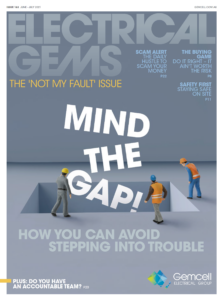
Issue 163
JUN - JUL 2021
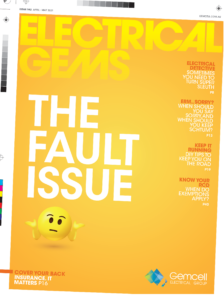
Issue 162
APR - MAY 2021

Issue 161
FEB - MAR 2021

Issue 160
DEC 2020 - JAN 2021

Issue 159
OCT - NOV 2020

Issue 158
AUG - SEPT 2020

Issue 157
JUN - JUL 2022

Issue 156
APR - MAY 2020

Issue 155
FEB - MAR 2020

Issue 154
DEC 2019 - JAN 2020
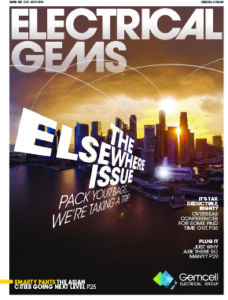
Issue 153
OCT - NOV 2019
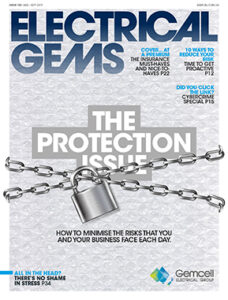
Issue 152
AUG - SEPT 2019

Issue 151
JUN - JUL 2019

Issue 150
APR - MAY 2019

Issue 149
FEB - MAR 2019

Issue 148
DEC 2018 - JAN 2019

Issue 147
OCT - NOV 2018

Issue 146
AUG - SEPT 2018

Issue 145
JUN - JUL 2018

Issue 144
APR - MAY 2018

Issue 143
FEB - MAR 2018

Issue 142
DEC 2016 - JAN 2017

Issue 141
OCT- NOV 2017

Issue 140
AUG - SEPT 2017

Issue 139
JUN - JUL 2017
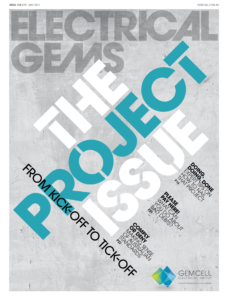
Issue 138
APR - MAY 2017

Issue 137
FEB - MAR 2017

Issue 136
DEC 2016 - JAN 2017

Issue 135
OCT - NOV 2017

Issue 134
AUG - SEPT 2016

Issue 133
JUN - JUL 2016
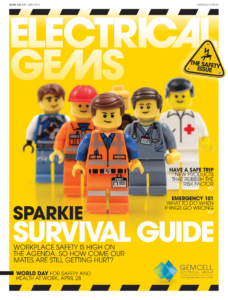
Issue 132
APR - MAY 2016

Issue 131
FEB - MAR 2016
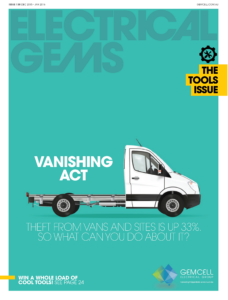
Issue 130
DEC 2015 - JAN 2016

Issue 129
OCT - NOV 2015

Issue 128
AUG - SEPT 2015

Issue 127
JUN - JUL 2015

Issue 125
APR - MAY 2015

Issue 125
FEB - MAR 2015

Issue 124
DEC 2014 - JAN 2015

Issue 123
OCT - NOV 2014

Issue 122
AUG - SEPT 2014

Issue 121
JUN - JUL 2014

Issue 120
APR - MAY 2014

Issue 119
FEB - MAR 2014
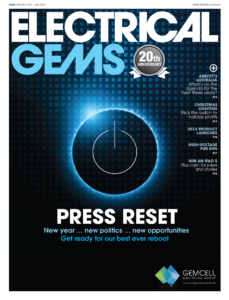
Issue 118
DEC 2013 - JAN 2014

Issue 117
OCT - NOV 2013

Issue 116
AUG - SEPT 2013

Comments (0)
Write a Comment